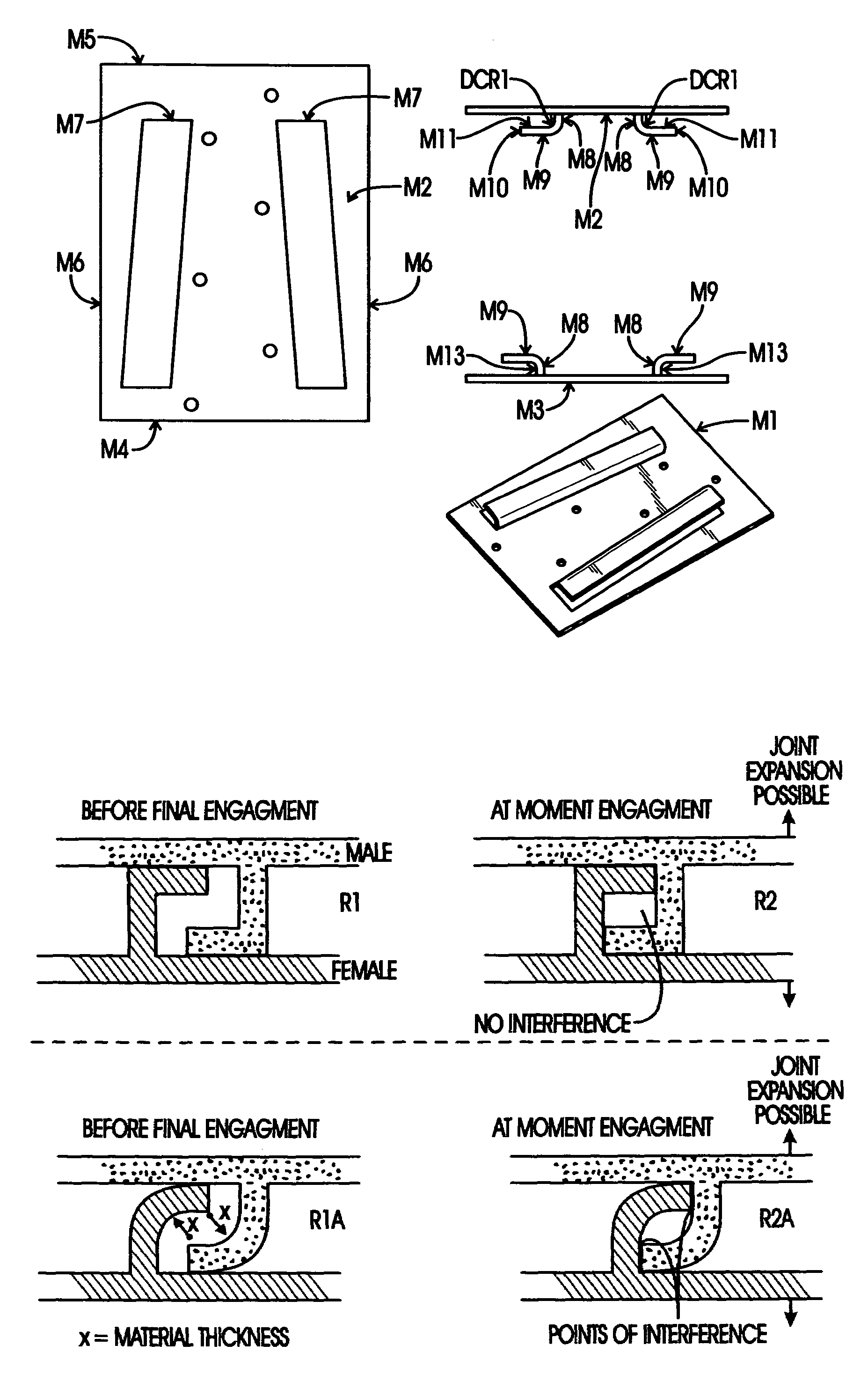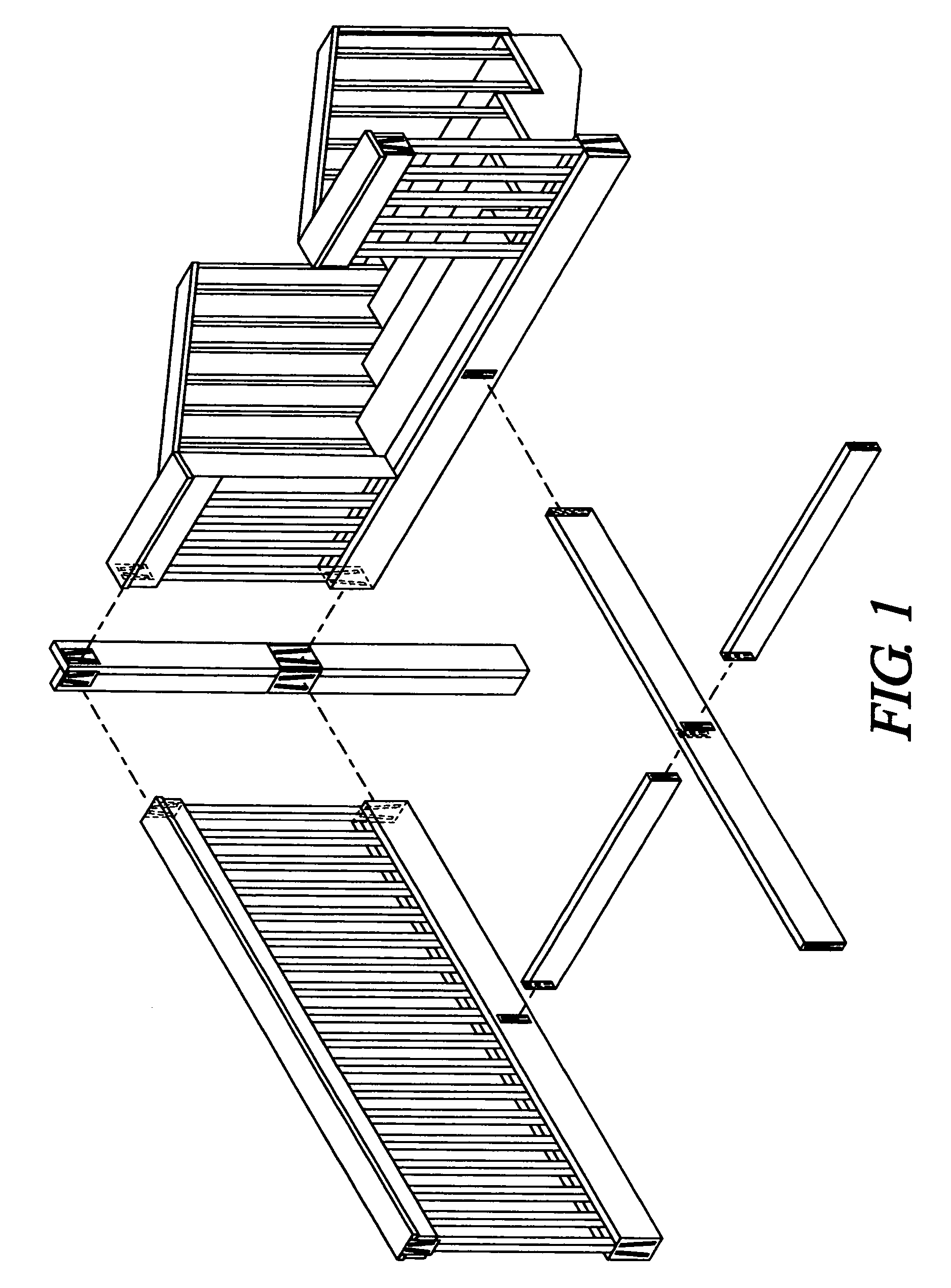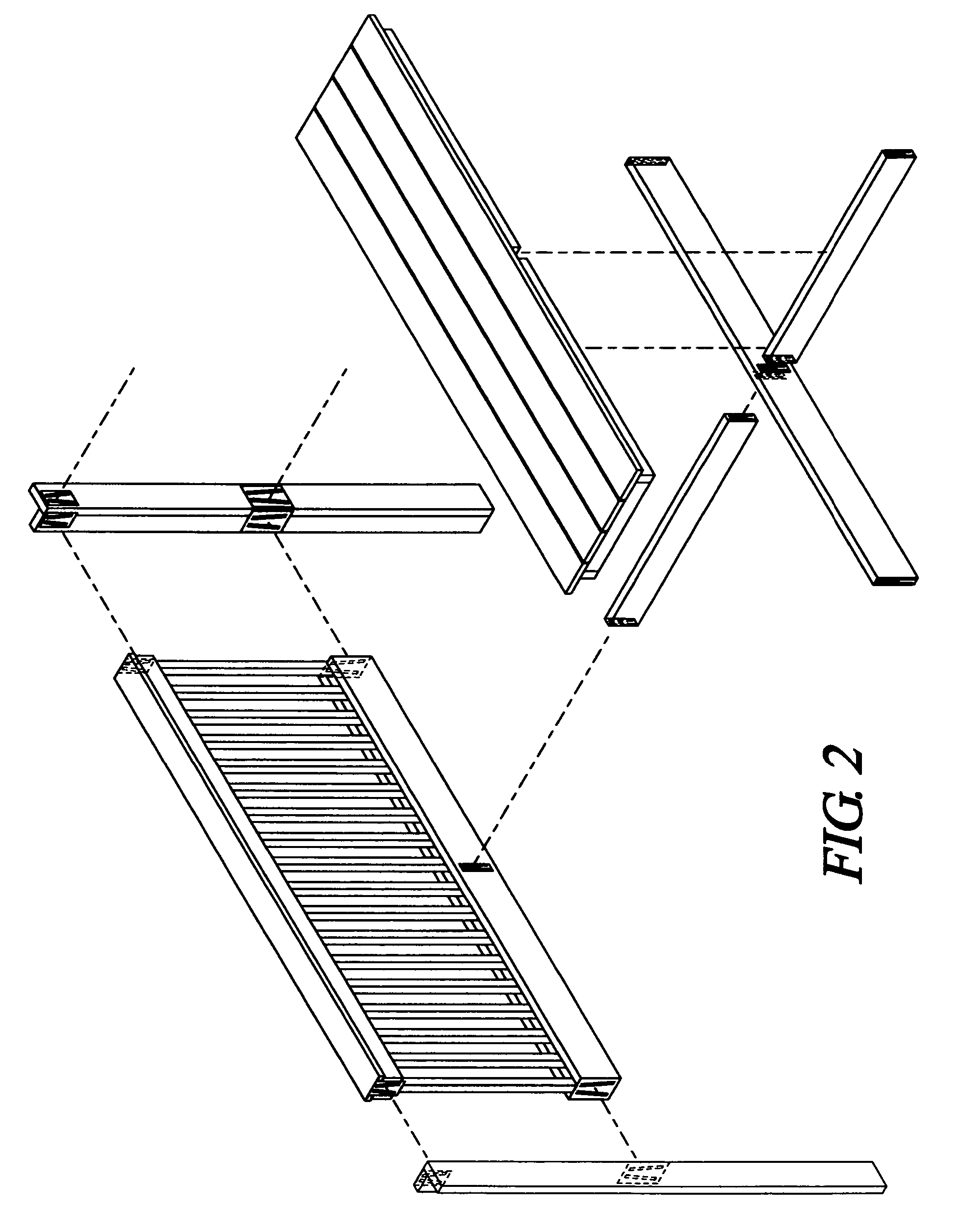Modular structures and connector assembly apparatus
a technology of modular structures and connectors, applied in the direction of scaffold accessories, washstands, light support devices, etc., can solve the problems of time-consuming and difficult manufacturing processes, inconsistent and intentional loose fittings, and lock devices, so as to avoid costly secondary forming operations and be well adapted to use
- Summary
- Abstract
- Description
- Claims
- Application Information
AI Technical Summary
Benefits of technology
Problems solved by technology
Method used
Image
Examples
Embodiment Construction
[0077]In the following descriptions when referring to connectors, the terms “top” and “bottom” are arbitrary and used only as a means of orienting the reader. In actual operation either end of the connector assembly may be used in the superior position, so long as the male and female components are matched in orientation.
[0078]Disclosed herein is a Modular Construction System (MCS) driven by multiple parameters. The resultant structure must, and does, comply with International Building Code standards for residential structures, where applicable. The resultant structure must be, and is, tight and rigid when fully assembled. The resultant structure must be, and is, quickly and easily assembled without tools. The connector assembly must be, and is, sufficiently precise to permit building extended and complex structures capable of disassembly and reassembly. Finally, the components must be, and are, capable of efficient manufacture to ensure their affordability.
[0079]As disclosed herein...
PUM
| Property | Measurement | Unit |
|---|---|---|
| length | aaaaa | aaaaa |
| thickness | aaaaa | aaaaa |
| dimensions | aaaaa | aaaaa |
Abstract
Description
Claims
Application Information
 Login to View More
Login to View More - R&D
- Intellectual Property
- Life Sciences
- Materials
- Tech Scout
- Unparalleled Data Quality
- Higher Quality Content
- 60% Fewer Hallucinations
Browse by: Latest US Patents, China's latest patents, Technical Efficacy Thesaurus, Application Domain, Technology Topic, Popular Technical Reports.
© 2025 PatSnap. All rights reserved.Legal|Privacy policy|Modern Slavery Act Transparency Statement|Sitemap|About US| Contact US: help@patsnap.com



